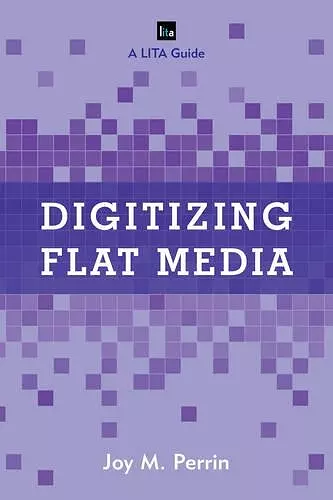Digitizing Flat Media
Principles and Practices
Format:Paperback
Publisher:Rowman & Littlefield
Published:15th Dec '15
Currently unavailable, and unfortunately no date known when it will be back
This paperback is available in another edition too:
- Hardback£95.00(9781442258082)

Here is a concise guide to the nuts and bolts of converting flat media (books, papers, maps, posters, slides, micro formats, etc) into digital files. It provides librarians and archivists with the practical knowledge to understand the process and decision making in the digitization of flat media. Instead of having to learn by trial and error, they will get a well-rounded education of the practical aspects of digitization and have a better understanding of their options. This is the stuff they don’t teach you in school. People can be lured into thinking that all it takes to digitize something is a scanner and some metadata. This guide illustrates the practical aspects of digitization such as: ·the physical challenges of scanning books without cutting the spine, ·the differences between a “scanner” that uses a scanning head vs a “scanner” that uses a camera, ·the different options for workflow for digitized items, and ·the reasons for choosing one scanner over another for reasons other than price. Digitizing Flat Media: Principles and Practices is intended to give librarians and archivists the benefit a seasoned digitization professional guiding them and helping them figure out exactly what needs to be done when.
Her book is written for people at all levels of experience with digitization who are, or will be, in the process of digitizing flat media such as books, maps, slides, papers, posters, micro formats, etc. This is evident in Perrin’s writing style, which veers away from overly technical jargon, preferring simpler language. The book is designed to help readers discover the best possible options when considering a digitization project. Also, because most large-scale digitization endeavors are linked to grants or donors, the book can be used to help staff have a realistic vision of the costs and length of a project when writing grant proposals.... The book attempts to cover all the bases, but, if the reader is seeking more information, a bibliography is at the end of each chapter. There is also an index in the back of the book. Anyone involved in ongoing digitization projects will find this book useful. It covers the digitization process from its early planning stages to managing the collection after digitization. Perrin is correct regarding the scarcity of similar books now on the market. So those who currently have (or will in the future) an ongoing digitization program at their academic institution, governmental department, or private company may consider this to be the go-to book at the moment. * Technical Services Quarterly *
This is a helpful guide intended for ‘librarians and archivists’ that is suitable for both the absolute beginner and those with a little bit more knowledge about digitization…. This book will mostly be useful to those who are starting out, and need a bit of perspective on how to get their project on the right footing…. This book will also provide people with reassurance that there is no single solution and that every project is a learning opportunity. Not even the experienced people get it right all the time. * Archives and Records: The Journal of the Archives and Records Association *
ISBN: 9781442258099
Dimensions: 226mm x 151mm x 12mm
Weight: 259g
156 pages